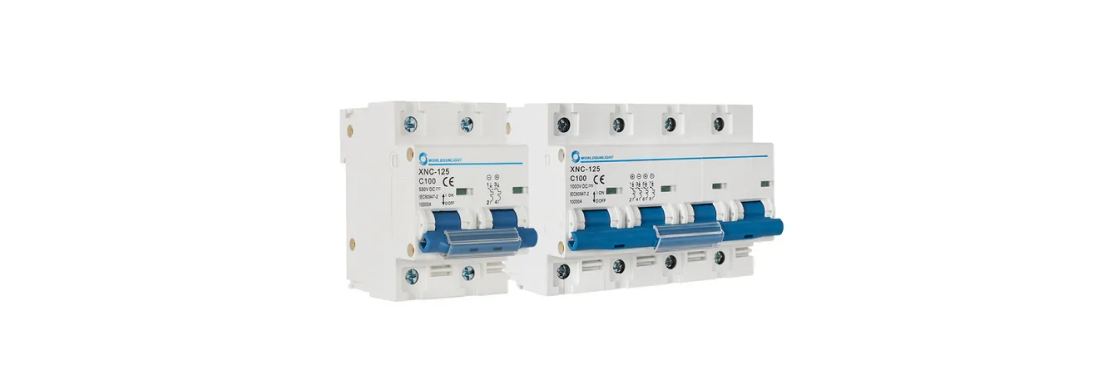MCB Breaking Capacity 6kA vs 10kA for Homes: Which One is Right?
Table of Contents
- 1. What is Breaking Capacity in MCBs?
- 2. 6kA vs 10kA MCBs: Key Differences
- 3. Which MCB Capacity Suits Indian Homes?
- 4. Pros and Cons at a Glance
- 5. Safety, Compliance, and Peace of Mind
- 6. Actionable Tips for Homeowners
- 7. Authoritative External Links
- 8. FAQ
What is Breaking Capacity in MCBs?
Breaking capacity, expressed in kiloamperes (kA), measures how much short-circuit current a Miniature Circuit Breaker (MCB) can safely interrupt without damage.
Picture it as the “safety limit” for your home wiring—if the current suddenly spikes because of a fault, your MCB must stop it instantly to prevent damage or fire.
6kA vs 10kA MCBs: Key Differences
6kA MCBs
Designed to handle fault currents up to 6,000 amps.
Usually enough for most residential circuits and apartments, where such high fault levels are rare.
More economical, widely available, and compact.
10kA MCBs
Handles fault currents up to 10,000 amps.
Essential for locations with higher risk such as large commercial premises or buildings with heavy equipment.
Provides a bigger “safety margin,” but comes at a higher cost.
3. Key Smart Home Devices for Beginners
Start with the basics and expand:
Smart bulbs: Change brightness or colour and schedule lighting—no manual switches.
Smart plugs: Turn old devices ‘smart’ by plugging them in.
Voice assistants: Gadgets like Amazon Alexa or Google Home respond to voice commands.
Security cameras & doorbells: Watch live video and get alerts on your phone.
Smart fans or ACs: Adjust settings remotely, ideal for hot Indian summers.
| Feature | 6kA MCB | 10kA MCB |
|---|---|---|
| Max Fault Current | 6,000 amps | 10,000 amps |
| Typical Usage | Residential, small shops | Industrial, large homes |
| Cost | Lower | Higher |
| Space Needed | Less | Slightly more |
| Safety Margin | Adequate | Higher, rarely required |
Which MCB Capacity Suits Indian Homes?
For most NON-professional Indians, a 6kA MCB is more than sufficient.
Indian homes, even in cities, rarely see fault currents above 6kA. In most flats, bungalows, or independent houses, local electricity supply and wiring standards make higher fault levels unlikely.
However, if your home is in a large complex with heavy lifts, central AC, or commercial machines—or you plan to upgrade appliances—a 10kA rated MCB adds extra peace of mind.
Pros and Cons at a Glance
6kA MCB
Affordable & widely available
Ideal for regular households
Compact size for small panels
Not suitable for industrial-level faults
10kA MCB
Higher protection for unexpected surges
Futureproof if load increases
Costs more, not usually needed in homes
Bulkier, may not fit older panels
Safety, Compliance, and Peace of Mind
Always ensure your MCB’s breaking capacity meets or exceeds the expected fault level for your home.
Over-rating (using 10kA where only 6kA is needed) won’t harm, but it’s often unnecessary expense.
Underrating (using 6kA where more is needed) can be dangerous—risking failure during a short-circuit.
Check with a qualified electrician and refer to local electrical standards (such as IS/IEC 60898), especially while renovating or upgrading older homes.
Actionable Tips for Homeowners
For most homes, choose 6kA MCBs from a reputed brand (like Schneider, Hager, Siemens, Legrand).
Opt for 10kA only if you expect high-powered machinery, commercial kitchens, or major load upgrades.
Ask your electrician to estimate the fault current—this is a one-time check for lasting safety.
Upgrade your MCB when adding heavy appliances or solar panels.
Use B-curve MCBs for lights/sockets; use C-curve for large appliances.
Authoritative External Links
FAQ
Q1. What happens if I use a 6kA MCB instead of 10kA in my home?
A: For standard homes, 6kA is enough. Only high-fault risk areas demand 10kA. Using 10kA costs more but offers more margin without drawbacks.
Q2. Will a higher-rated MCB protect my home better?
A: Not in low-fault current homes! A 10kA MCB won’t trip faster or provide “stronger” protection for everyday loads. The key is matching fault current, not just going bigger.
Q3. How do I know my home’s fault level?
A: An electrician can quickly measure or estimate it using the main supply and wiring standards. Most Indian homes are below 6kA.
Q4. Can I mix 6kA and 10kA MCBs in my home?
A: Yes—but keep it simple! Use 10kA only for very high-load circuits, otherwise keep all MCBs the same specification for ease of future maintenance.
Q5. Is it safe to buy local or no-brand MCBs?
A: Always choose ISI-marked, certified MCBs from trusted brands to ensure compliance, safety, and after-sales support.
